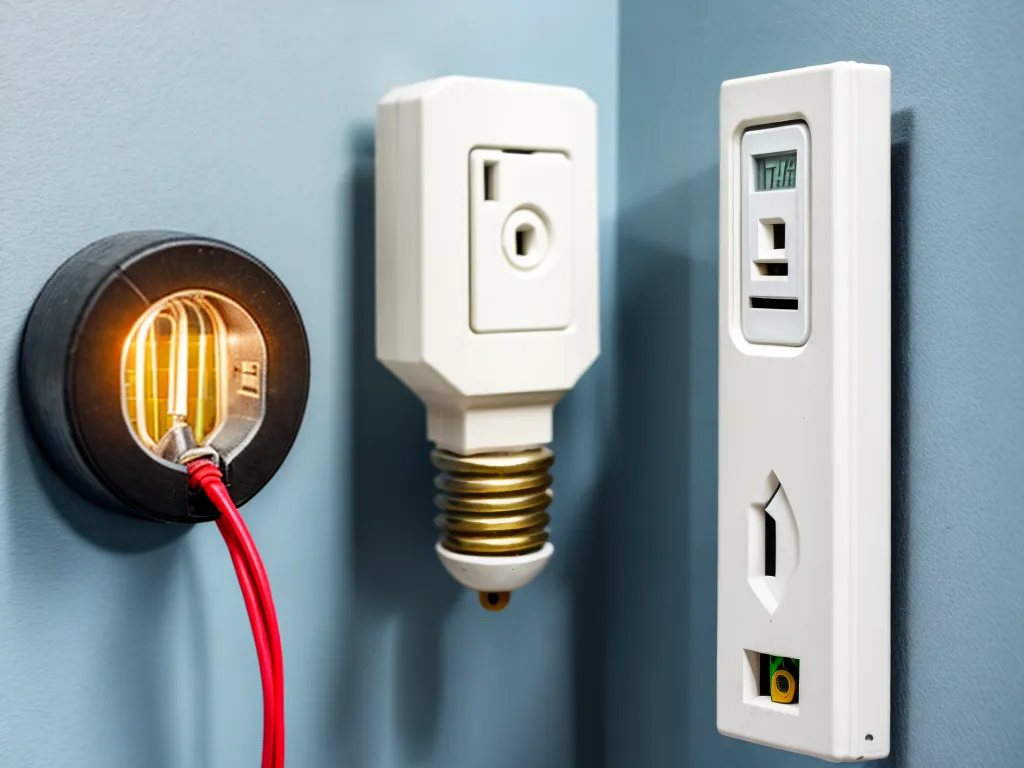
Wiring your home efficiently can significantly reduce your energy costs and carbon footprint. However, rewiring projects can get expensive fast. Here's how you can upgrade your home's electrical system for maximum efficiency without overspending.
Perform an Energy Audit First
Before updating your wiring, energy audit your home to identify problem areas. This involves:
-
Checking insulation levels in walls, attics, etc. Insufficient insulation leads to energy loss.
-
Testing for air leaks around doors, windows, outlets, etc. Seal leaks with caulk or weather stripping.
-
Inspecting appliances, lighting, and electronics for efficiency. Replace inefficient models first.
-
Evaluating your HVAC system's performance. An outdated system wastes energy.
An audit pinpoints what improvements will save the most energy. Then you can tailor your rewiring strategy accordingly.
Upgrade Your Electrical Panel
Your home's electrical panel controls and distributes power. An outdated panel can't handle today's energy demands efficiently.
Consider upgrading to a load center panel with:
-
Ample circuit capacity - At least 200 amps for a typical home. This reduces circuit strain.
-
Surge protection - Prevents power spikes that damage electronics.
-
Individual circuit breakers - Better overcurrent protection and easier to maintain.
-
Spaces for additional circuits - To support new wiring and devices.
Though pricey ($1,500-$3,000 installed), a new panel maximizes efficiency and safety.
Strategically Add Circuits and Outlets
Carefully adding circuits and outlets optimizes energy use:
-
Run new lighting circuits separate from outlets. This stabilizes lighting when appliances turn on.
-
Install circuits for major appliances like the refrigerator. This prevents overload and gives you control.
-
Add outlets in useful locations to minimize use of extension cords. Position near electronics and smart home devices.
-
Use outlet splitters with integrated USB ports. These let you charge multiple devices without adapters that consume "phantom" power when not in use.
-
Install occupancy sensor switches for outdoor lighting and infrequently used areas. This automates energy savings.
Use Energy Efficient Wiring
Choose wiring with efficiency in mind:
-
Solid core rather than stranded wire. It has lower resistance and less energy loss over distance.
-
Insulated wires labeled "THHN" for dry areas and "THWN" for wet areas. These have very good insulation properties.
-
GFCI outlets wherever water exposure risk. They prevent lethal shocks.
-
Smart switches and outlets to control lighting and devices remotely. Flexibility allows for energy savings.
-
Low-voltage wiring for landscaping and outdoor lighting. Very efficient with LED bulbs.
-
Aluminum wiring for the main service entry cables. It's lighter than copper and cheaper for large feeders.
Consider Integrating Smart Home Technology
Smart home devices allow unprecedented control over your home's energy use:
-
Smart thermostats adjust temperature automatically based on occupancy and usage patterns. Studies show 10-12% drop in HVAC costs.
-
Smart switches turn lighting on/off on schedules or occupancy sensing. No more lights left on.
-
Smart plugs let you control appliances remotely to reduce phantom loads.
-
Home energy monitoring systems give real-time data about your electrical consumption by device. Identify waste.
-
DIY installation makes smart tech affordable. Look for WiFi-enabled devices needing no special wiring.
The initial cost pays for itself quickly in energy savings.
Leverage Electrical Rebates and Incentives
Many utility companies and municipalities offer rebates for energy efficient electrical upgrades:
-
LED bulb rebates - $2-$5 back per bulb in some areas. Saves on long-term lighting costs.
-
Smart thermostat rebates - Up to $100 back from install. Quick payback on investment.
-
Appliance recycling rebates - Cash back for ditching old fridges and freezers. Reduces home energy load.
-
Solar panel incentives - Tax credits and cash rebates help offset solar system costs. Produce your own power.
-
Insulation rebates - Some utilities give back $0.15-$0.30 per square foot installed. Prevents heat loss through walls.
Check EnergyStar.gov and your utility's website for available offers. Incentives can make upgrades very affordable.
Focus on Efficiency Over Aesthetics
For budget wiring projects, focus on functionality over aesthetics. For example:
-
Use affordable electrical boxes without designer covers. Hide them behind furnishings.
-
Opt for exposed conduit rather than burying it behind drywall. Conduit lets you easily change wiring down the road.
-
Skip fancy light switches and outlets. Standard styles work the same.
-
Mount light fixtures directly to junction boxes. No need for costly mounting plates.
-
Carefully plan additions like recessed lighting to minimize labor costs.
Prioritize changes delivering the best efficiency gains first. Do visual upgrades later as budget allows.
Do Some Work Yourself
Where permitted, DIY parts of your rewiring project:
-
Adding straightforward circuits with existing adequate capacity. Take safety precautions.
-
Installing energy efficient lights and bulbs. Simple plug-and-play.
-
Mounting smart switches, wireless controls and sensors. Basic low-voltage work.
-
Running surface-mounted conduit and boxes. Conduit bends take practice but are a DIY-friendly approach.
-
Adding outlet splitters and USB ports. Extremely easy plug-in upgrades.
-
Sealing air leaks around electrical boxes and conduits. Improves efficiency.
Doing this work yourself saves on electrician markup. But always get permits and have professionals handle complex wiring.
With strategic planning and budget-friendly equipment choices, you can upgrade your home's electrical system to maximize energy efficiency without overspending. Leverage rebates and do simple DIY installs to further curb costs. The energy savings will continue paying dividends for years to come in the form of lower utility bills.